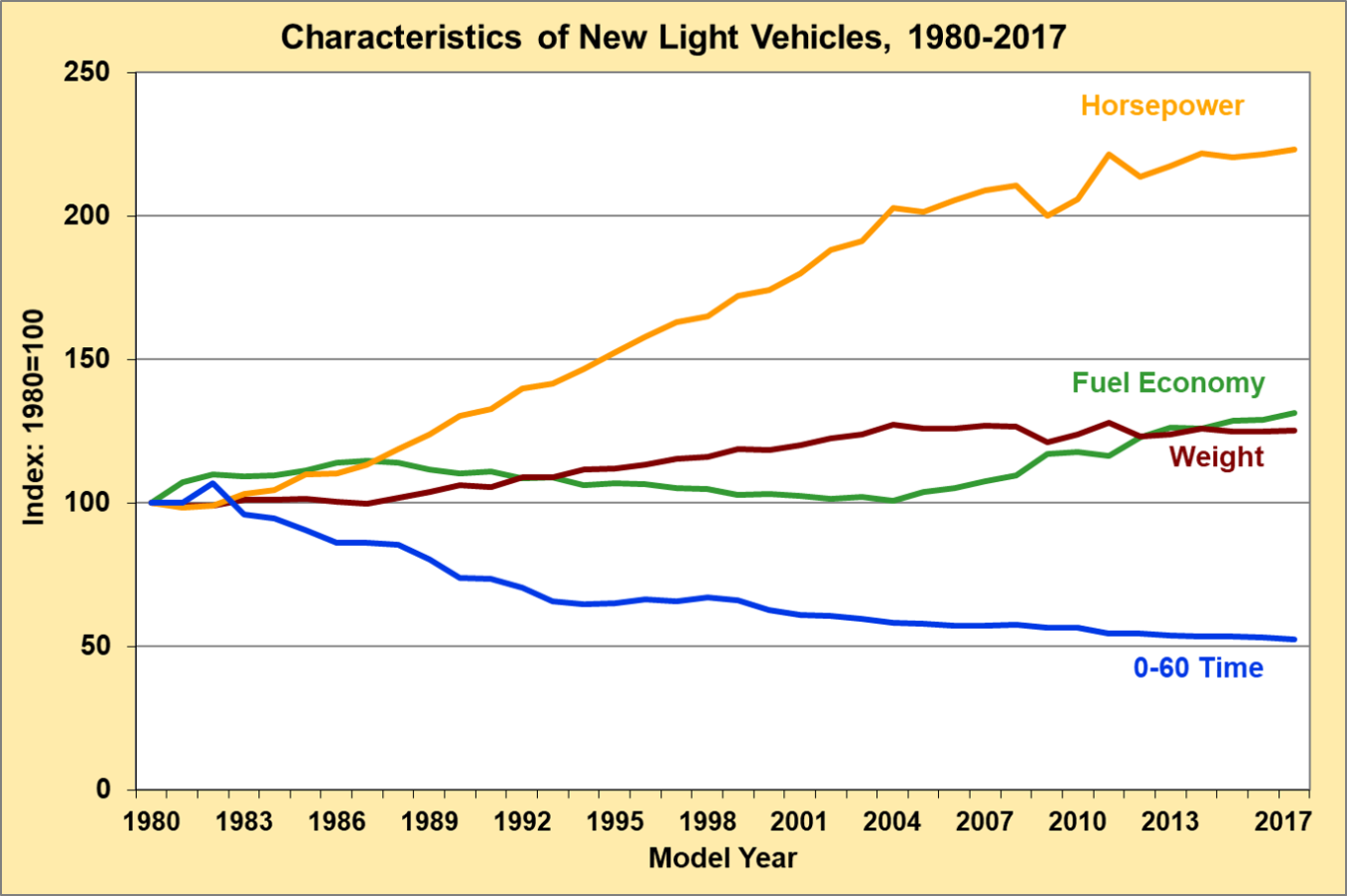Light vehicle manufacturers have been able to employ advanced technologies to improve both performance and fuel economy.
July 9, 2018Generally, increased performance comes as a trade-off with fuel economy. But light vehicle manufacturers have been able to employ advanced technologies to improve both performance and fuel economy. Despite a 123% increase in horsepower and 48% improvement in acceleration (measured by time to accelerate from 0 to 60 miles per hour) from model year 1980 to 2017, the fuel economy of vehicles improved 31%. The data are based on production-weighted averages. In the 1990s and early 2000s, fuel economy decreased while vehicle weight increased. Fuel economy has improved nearly every year since 2004.

Note: Data are production-weighted averages for each model year and do not represent any individual vehicle. Data for model year 2017 are preliminary.
Source: U.S. Environmental Protection Agency, Light-Duty Automotive Technology, Carbon Dioxide Emissions, and Fuel Economy Trends: 1975 through 2017, EPA-420-S-18-001, January 2018.

